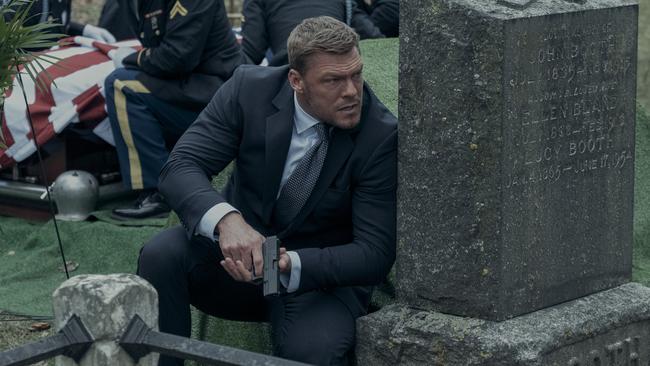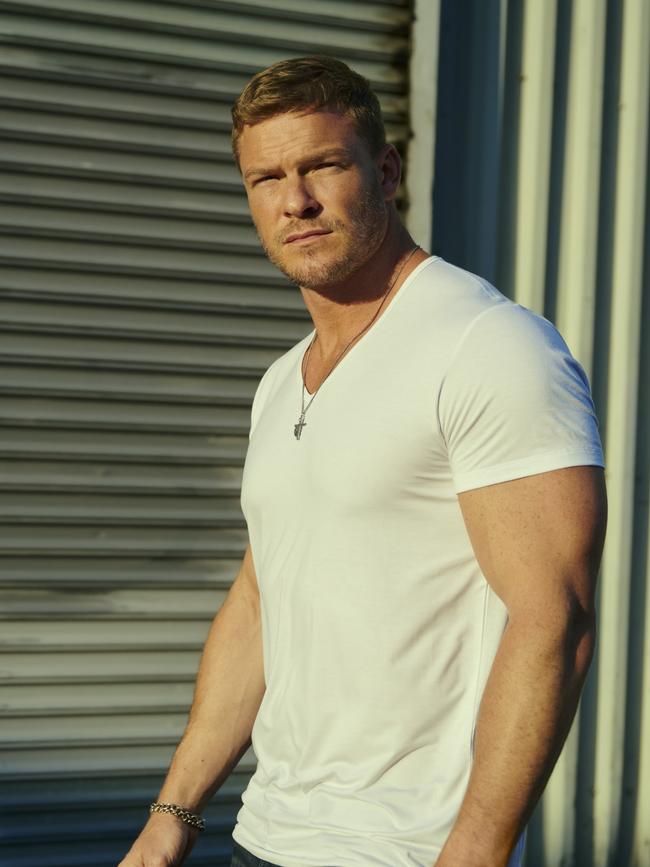New Reacher season even more thrilling than the first
Alan Ritchson is not only the perfect Reacher with an appropriately intimidating presence, but the actor has the right way with the required mordant humour the character delivers.

The hit TV show of the moment is once again Amazon Prime’s crime series Reacher, the first season of which – and there will be many, my friends – debuted early in 2022. The new one has become the No.1 title of the year for the streamer in terms of total viewers globally. The first three episodes surpassed the entire audience for season one by 50 per cent in just three days on the platform.
And, as in the books on which it’s based, from the best-selling Lee Child, Reacher, played with just the right touch by the huge Alan Ritchson (Blood Drive, Smallville), is again entertainingly dispensing his own brand of justice transcending the tawdry and corrupt routines of society’s legal systems.
It’s made Ritchson a huge star. He is not only the perfect Reacher with an appropriately intimidating presence, but the actor has the right way with the required mordant humour the character delivers. And he’s able to do it with a bare minimum of dialogue and movement. He’s stronger in the new season: now we are always aware that there is a sharp analytical mind at work, a distinctive intelligence that powers not only that physicality but his extremely acute deduction skills. “Details matter,” is another of his mantras.
Jack Reacher is of course novelist Child’s hero of epic proportions. The ex-MP is a drifter with a seldom-talked-about past; he is hyper-analytical and seemingly indestructible, and has an almost psychotic obsession with being his own man. Reacher has no fixed address, and carries nothing but, almost literally, the shirt on his back. And a folding toothbrush. He calls himself “a direct descendant of the wandering type.”
He just travels from place to place pursuing his own interests, which are largely introspective, and keeping himself to himself. That is, until something on the side of the road intrigues him and he can’t look away. His life is a rebellion against and a rejection of the ordinary concepts of success and responsibility. He is the knight errant, according to his creator: an instinctive protector of the weak, a defender of the innocent, essentially a moral man in a corrupt and ambiguous world.
“It was a paradigm that I was always attracted to reading about,” Child says of the feudal chivalrous knight. “And not surprisingly, because if a character has survived three thousand years of human storytelling, it’s got to be a good character – it’s market-tested already. That’s just a very attractive paradigm: The knight errant who shows up in time to save the day.”
Reacher has so far done that in 29 novels and a heap of short stories; the books collectively selling more 100 million copies worldwide. He was written, Child says, as a kind of antidote to the troubled antiheroes who had become so fashionable that a kind of one-upmanship was setting in.
“The detective was an alcoholic, which was great the first time out, a real issue, real characterisation,” Child says of some contemporary noir stories.
“But then the next guy is a divorced alcoholic. Then a divorced alcoholic whose teenage daughter hates him, and he’s accidentally shot a kid in the dark, so he has to go and live in a cabin in the woods for the rest of his life. So I deliberately made Reacher much more of an old-fashioned guy. I wanted to get rid of misery because, ultimately, nobody likes miserable people.”
The series was created by Nick Santora, a writer with a long history of involvement in action series like Scorpion and Prison Break, and a real feel for genre storytelling. He has an instinctive feel for the kind of narratives in which best-selling crime writer Karin Slaughter says, “The characters have to matter as much as the plot, and the plot has to matter as much as the characters.”
Unlike so many heroic protagonists, no gloomy air of aloneness haunts Reacher; his independence gives him an anchor of stability and continuity in a world of isolation and disorder. “My books are straightforward, old-fashioned adventures where there is a clear-cut, binary choice: you are either with the hero or against him, and that determines your fate,” Child says. “And Jack Reacher will never lose, and he will never be grey in any way.”
Child has a visceral feel for the essential pattern of action and theme that underlies the hard-boiled story and can express the pattern with great simplicity and force. It’s something Santora shares, expert at marrying hard-hitting action with intense drama. But he’s also fought hard as a writer to catch Reacher’s droll humour.

“Reacher is incredibly direct, and most people today aren’t direct about anything,” he says. “If a friend makes you lunch and it’s terrible, and they ask you how you liked the salad, you are going to say it’s delicious. Reacher might go, ‘It wasn’t that good’,’ because he doesn’t want to lie to you. ‘I like you and respect you and you are my friend, but the salad kinda sucked.’
“Reacher being that direct is funny, so we tried to capture that as well.” The new series is based on Child’s Bad Luck and Trouble, his 11th Reacher book, a novel The New York Times said “unfolds with the simple, immaculate logic that makes this series utterly addictive”.
And it provides a tougher, hard-boiled plot for Santora to adapt, a more complex storyline in what is really a revenge thriller. There are tougher villains and stronger supporting characters, too, in a narrative that finds Reacher up against an unknown, highly organised group of antagonists trying to take him out.
It begins with a helicopter high above the California desert and a man is sent flying into the night, his legs already broken it turns out, a tortured body falling to oblivion.
Meanwhile, Reacher, a decade post military, is in a small town in Arkansas, about to buy a pile of second hand clothes, where he manages to stop a carjacking – these things are always happening to him – when at a nearby ATM he receives a coded message.
Francis Neagley, played with clipped control by Maria Sten, now a retired US Master Sergeant, once part of Reacher’s 110th Special Investigations Unit, finds her old boss using a numerical signal only the eight former members of the squad know.
(She sends him $1030.00, which Reacher recognises as their old army code, 10–30, for urgent help needed. Reacher loves analysing numbers.)
When she meets up with Reacher – she’s now partner with a private security firm in Chicago – she tells him the dead man from the helicopter was Calvin Franz, a former member of their team. When they can’t contact other former comrades, their suspicions rise. Three seem to be missing, while another died in a fatal accident some years earlier.
They manage to meet with another former member in the abrasive David O’Donnell, a wisecracking Shaun Sipos, and it’s apparent somebody is targeting members of the 110. Dangerous as their motto is “You don’t mess with the Special Investigators”.
Soon Reacher and his survivors are hunting their killers as they bury the dead and try to forensically connect the dots.
It’s all deftly done, catching what Child, also an executive producer, calls the “narcotic” quality of streaming television.
“It must be a modulation of pace through the writing, that probably slows at the one-third point in an episode and gives you the impression that you’re luxuriating in a sophisticated story, then accelerates towards the end and shoots you out like you’re coming down a water pipe into the next one.”
Reacher, streaming on Amazon Prime.

